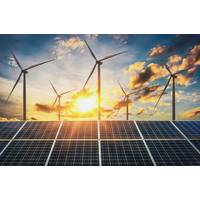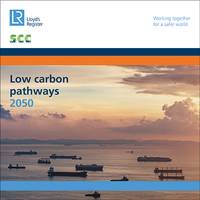Saudi Aramco CEO calls on a reset in energy policies for developing countries
The head of Saudi Aramco, who called for a reset to policies in developing countries, said that progress in Asia's energy transition is slower, less equitable, and more complex than many had expected. Aramco CEO Amin Nasser said that even with the transition as economies expand and standards of living rise, the Global South will likely see significant growth in the oil demand for a very long time. While this growth will eventually stop, it is likely that a plateau is to follow. In a speech delivered at the Singapore International Energy Week…
Grid operators predict a 20% drop in French gas consumption by 2030
French grid operators announced on Thursday that the consumption of gas in France will drop by nearly 20% by 2030, as a result of changes made to meet climate targets and to reduce costs. France is Europe's biggest energy consumer and its gas consumption has a significant impact on the region's trade and price flows. GRDF GRTgaz Terega conducted a study that forecasts 2030 consumption of 321 terawatt hours (TWh), 78 TWh less than in 2023. Recent efficiency gains and cost saving initiatives have led to fewer demand reductions.
Report: China's declining coal plant approvals indicate a shift in energy policy
The sharp decline in the number of new coal plants in China indicates that the world's biggest builder polluting power stations is shifting its energy policy to more renewable development. However, coal will continue to play a major part, according a report on Thursday. China approved only 10 new coal-fired plants with a combined capacity of 9 gigawatts in the first six months of 2024, a drop of 83% from the previous year. This is according to the Helsinki-based Centre for Research on Energy and Clean Air and the U.S. Global Energy Monitor.
More 'Green' Power Needed To Meet Paris 2030 Target

According to DNV GL’s latest energy report ‘Energy Transition Outlook: Power Supply and Use’, eight times more wind and solar power is needed by 2030 to help meet the Paris Agreement on climate change’s target. This transition will require more than ten times power generated by the solar means and five times the wind power currently being generated in combination with other technology measures to limit global warming to well below 2 degrees and meet the targets of the Paris Agreement.
As Renewables Soar, BP sees China Hitting Brakes

Global demand for renewable power will soar at an unprecedented pace over the coming decades, BP said in a benchmark report on Thursday, while China's energy growth is seen sharply decelerating as its economic expansion slows.Still, China is set to remain the largest energy consumer by a long stretch into 2040 although India should overtake it in terms of demand growth beginning in the next decade, the British oil and gas giant said in its 2019 Energy Outlook.China's energy demand rose by 5.9 percent over the past 20 years…
Global Carbon Emissions Hit Record High in 2017 - EIA
Global energy-related carbon emissions rose to a historic high of 32.5 gigatonnes last year, after three years of being flat, due to higher energy demand and the slowing of energy efficiency improvements, the International Energy Agency (IEA) said. Global energy demand rose by 2.1 percent last year to 14,050 million tonnes of oil equivalent, more than twice the previous year's rate, boosted by strong economic growth, according to preliminary estimates from the IEA. Energy demand rose by 0.9 percent in 2016 and 0.9 percent on average over the previous five years.
Statoil Calls for World Energy Transformation

In a post on its website, Statoil said it expects substantial changes in the global energy mix. In moving toward a low-carbon energy system, new renewables may increase from just over one percent of total primary energy demand in 2014 to almost 20 percent in 2050, the company said. In a scenario that is consistent with the 2-degree target, oil reduces its share from 31 to 23 percent, while gas remains at around 20 percent. “We believe it is possible to realize energy emission reductions consistent with the 2-degree target, but it will require immediate and coordinated global action.
Rotterdam Wants an Ambitious CO2 Reduction Plan from IMO
The Port of Rotterdam Authority is calling on the European Parliament to put pressure on the International Maritime Organization (IMO) to produce an ambitious worldwide CO2 reduction plan for sea shipping. Given the recent plans, measures could only be expected by 2023 at the earliest. “Far too late. The plans are not challenging enough,” believes Allard Castelein. The CEO of the Port of Rotterdam Authority issued his call on the eve of the vote on revising the EU ETS directive, in the European Parliament’s Environmental Commission.
LR, SCC Release Low Carbon Pathways 2050 Study

Lloyd’s Register (LR) and Shipping in Changing Climates, a $4m multi-university and cross industry research project funded by EPRSC, have today released Low Carbon Pathways 2050 – a new study that details a number of potential pathways for the shipping industry’s transition to a low carbon future. The report underlines the need for shipping to start its decarbonization imminently – as stringency increases over time, increasingly high-cost mitigation steps are required. The later we leave decarbonization, the more rapid and potentially disruptive it will be for shipping.
Energy Efficiency Gains Ground Despite Lower Energy Prices -IEA

As governments focus on implementing their commitments to save energy and reduce carbon emissions under the recently ratified Paris agreement, a new report from the International Energy Agency (IEA) highlights the progress made by energy efficiency policies around the world over the past year, particularly in China and other emerging economies. The role of energy efficiency in the global energy transition is examined in the IEA’s Energy Efficiency Market Report2016, which finds that its importance cannot be overstated.
Opportunities for Shipping from Decarbonisation Through Windpower
As the interconnector of global trade shipping facilitates every other part of the economy, and decision making around low-carbon pathways in other transport modes and industries will both influence and constrain decarbonisation in shipping. Whatever the outcomes at UNFCCC Conference of Parties (COP21) in Paris the shipping sector faces a huge challenge of rapid decarbonisation. Clear emission reduction goals and unequivicol leadership is essential. The shipping sector’s energy efficiency…
$310 Billion 'Energy Efficiency' Market Grows Rapidly

IEA report sees energy efficiency finance becoming established market segment in its own right ... The global energy efficiency market is worth at least $310 billion a year and growing, according to a new report from the International Energy Agency that confirms the position of energy efficiency as the world’s “first fuel”. The report also finds that energy efficiency finance is becoming an established market segment, with innovative new products and standards helping to overcome risks and bringing stability and confidence to the market.
Statoil: Macroeconomic and Energy Outlook to 2040

Statoil publishes its annual Energy Perspectives report outlining the analysis of macroeconomic and energy market developments towards 2040. “Global economic development will continue to drive energy demand. At the same energy efficiency improvements, fuel mix changes and a changing economic structure give a decline in the OECD countries’ energy demand between now and 2040”, says Statoil’s Chief economist Eirik Wærness. Energy Perspectives 2014 analyses three different scenarios for the development from 2011 to 2040, to illustrate the major uncertainties in modelling long-term developments.
Stricter EPA Rules Could boost Nuclear Sector
U.S. environmental regulators could throw a lifeline to the nation's ailing nuclear power fleet when they unveil landmark carbon pollution curbs next week, heeding calls from operators like Exelon Corp to acknowledge nuclear energy as a valuable way to reduce emissions. The Environmental Protection Agency is due on Monday to release a plan to slash pollution from the power sector, the centerpiece of President Barack Obama's efforts to tackle climate change and likely one of the most contentious initiatives of his second term.
US Energy Dept Offers $4b Loan Aid for Renewable Energy
The U.S. Energy Department on Wednesday unveiled a plan to offer up to $4 billion in loan aid to renewable energy projects, opening up another round of funding for a program that faced harsh political attacks over past government-backed failures. The draft plan would provide loan guarantees for innovative projects that limit or avoid greenhouse gas emissions. It will specifically focus on advanced electric grid technology and storage, biofuels that can be used in conventional vehicles, energy from waste products and energy efficiency improvements.
IEA Pushes for Renewables and Nuclear Power
In a review of Finnish energy policies launched, the International Energy Agency praised Finland for its commitment to a sustainable energy future. With its energy-intensive industries and its cold climate, Finland’s energy consumption per capita is the highest in the IEA. Yet the IEA noted that Finland’s energy policy framework was broad and coherent, covering all sectors and paving the way for a more sustainable energy system in the longer term. “Finland is highly dependent on imported fossil fuels…
